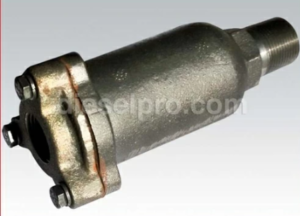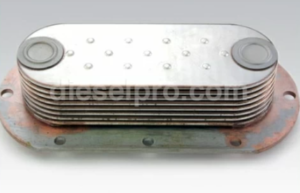Introduction
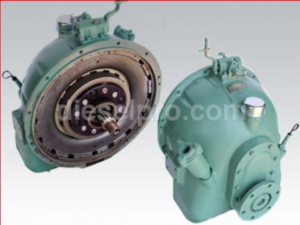
This detailed replacement guide is designed to support owners, technicians, and marine mechanics working with Allison M and MH Series marine transmissions. Using the parts shown in the image provided, this article outlines how to identify, inspect, remove, and replace the most common components in these durable marine gear systems.
Each section focuses on a specific part category, providing practical, hands-on insights while emphasizing best practices for reliability and long-term performance. Always ensure your vessel is safely secured, and refer to the OEM service manual for precise tolerances and torque specs.
1. Manual & Tools – Essential Reference and Equipment

Before starting any service or replacement task on your Allison M or MH marine transmission, obtain a comprehensive service manual and the necessary tools. The service manual includes:
-
Exploded views
-
Torque specs
-
Hydraulic diagrams
-
Service intervals
-
Removal and installation procedures
Tools you’ll need include:
-
Torque wrench (calibrated)
-
Seal drivers
-
Snap ring pliers
-
Bearing pullers
-
Spanner nut socket
-
Thread sealant and non-hardening gasket compound
While universal tools can handle basic servicing, model-specific tools may be required for selector valve calibration, bearing press fits, and spanner nut tightening.
2. Rebuilt Allison M & MH Gears – When to Replace the Entire Transmission
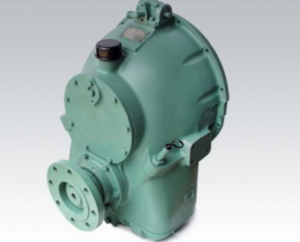
Rebuilt transmissions are ideal when:
-
The clutch pack is worn and slipping
-
Gear teeth are chipped or pitted
-
There is excessive metal contamination in the oil
-
The selector valve is severely damaged
-
Internal housing or bearing carriers are cracked
A rebuilt Allison M or MH transmission includes new clutches, bearings, seals, washers, rings, and often the oil pump. Rebuilt units are tested under load conditions to ensure proper hydraulic function.
If downtime is not an option, or multiple parts have failed, replacing the entire unit with a rebuilt gear may be more cost-effective than overhauling in the field.
See Our Catalog Of Allison Marine Transmissions
Rebuilt Allison MH Transmission
Rebuilt Allison M Transmission
3. Overhaul Kit – Complete Seal and Gasket Replacement

The overhaul kit is the backbone of any major service job. It includes:
-
Gaskets
-
O-rings
-
Seal rings
-
Clutch friction and reaction plates
-
Paper gaskets and shaft seals
Replacement Guidelines:
-
Replace all seals and gaskets during any disassembly
-
Do not reuse paper gaskets once compressed
-
Replace both friction and reaction clutch plates together to prevent uneven wear
-
Always inspect groove depths on friction plates
When ordering an overhaul kit, match it to the exact model number and rotation type of your transmission to ensure proper fitment.
Overhaul Components For Allison M Catalog
Overhaul Components For Allison MH Catalog
4. Individual Seals – Fixing Localized Leaks

If you’re only addressing a minor oil leak, individual seals can be replaced without removing the entire transmission. Common seals include:
-
Output flange oil seal
-
Input shaft seal
-
Selector shaft seal
-
Spanner nut o-ring
Replacement Tips:
-
Clean the area thoroughly before installing new seals
-
Apply light oil to the new seal before installation
-
Use seal drivers for even pressure
-
Do not over-tighten bolts on flanges or bearing retainers after resealing
A leaking seal, if left unresolved, can allow contaminants into the system or cause low oil pressure—leading to clutch failure.
Seals For Allison M Transmission
Seals For Allison MH Transmission
5. Clutch Plate – Worn or Burnt Clutches

The clutch plates—both friction and steel—are critical to the operation of forward and reverse gear. Symptoms of clutch failure include:
-
Slipping under load
-
Delayed engagement
-
Burnt oil smell
-
Overheating transmission
Replacement Steps:
-
Drain transmission oil and remove clutch housing
-
Remove snap rings and extract friction and reaction plates
-
Inspect for signs of warping, glazing, or loss of groove depth
-
Replace with new clutch packs from a complete kit
-
Reassemble with proper clearances and torque values
Always soak new friction plates in clean oil prior to installation.
Clutch Plate Catalog For Allison M Transmission
Clutch Plate Catalog For Allison MH Transmission
6. Hydraulic Pump – Pressure Delivery System

The hydraulic pump is driven by the input shaft and delivers oil to engage the clutches. Symptoms of a failing pump include:
-
Low or no oil pressure
-
Sluggish clutch response
-
Gear engagement failure
Service Notes:
-
Inspect the gear teeth for wear or chipping
-
Replace worn bushings or damaged seals
-
Always prime the pump with oil before startup after reinstallation
-
Use new gaskets and seals during replacement
Ensure alignment with dowel pins when reinstalling the pump to prevent leakage or gear misalignment.
Hydraulic Pump & Related Components For Allison M
Hydraulic Pump & Related Components For Allison MH
7. Selector Valve & More – Control System Component

The selector valve controls whether forward, neutral, or reverse is engaged by directing oil to the appropriate clutch. Issues to look for include:
-
Hard shifting
-
Failure to hold gear
-
Loss of oil pressure when shifting
-
Control lever sticking
Replacement Tips:
-
Disconnect control linkage before removal
-
Clean valve body and inspect for sticking spools
-
Replace o-rings and seals
-
Reinstall with proper alignment to spool bore
Corroded or damaged selector valves can result in erratic shifting and should always be inspected during rebuilds.
Selector Valve & Control System Components For Allison M Gears
Selector Valve & Control System Components For Allison MH Gears
8. Transmission Bearings – Reducing Friction and Load Support

Bearings support the rotating shafts and planetary assemblies inside the gear housing. Worn bearings can lead to:
-
Vibration
-
Gear whine or howling
-
Shaft misalignment
-
Heat buildup
Service Guidelines:
-
Use a press to remove old bearings
-
Clean housing bores and inspect for scoring
-
Use freeze-fit and heat methods for installing new bearings if needed
-
Apply high-pressure grease where specified
Always replace bearings in sets and confirm part number compatibility for your exact transmission model.
Transmission Bearings For Allison M Transmission
Transmission Bearings For Allison MH Transmission
9. Sleeve, Ring – Shaft Support and Load Distribution

Sleeves and rings are used to house bearings and provide a low-friction contact surface for rotating components.
When to Replace:
-
Excessive wear or scoring
-
Oval deformation
-
Loss of press-fit tolerance
-
Grooves or pitting from failed bearing rollers
Inspect and measure all sleeves with a micrometer. Replacement sleeves should be installed using alignment tools to prevent misalignment during reassembly.
Sleeves, Rings & Related Components For Allison M Marine Transmission
Sleeves, Rings & Related Components For Allison MH Marine Transmission
10. Locknut – Retaining Components Under Torque
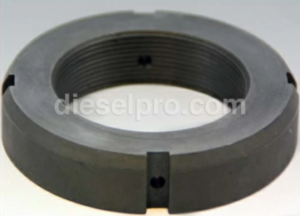
Locknuts retain critical rotating components such as planetary carriers and output shafts. Signs of failure include:
-
Shaft endplay
-
Backlash or noise during engagement
-
Leaking at shaft ends
Installation Notes:
-
Always replace locknuts when removed
-
Stake the nut securely using a chisel or punch
-
Torque according to manufacturer specs
-
Do not reuse deformed or overstaked nuts
Improper torque on locknuts can lead to catastrophic failure of internal assemblies.
Locknut & Related Components For Allison M Marine Transmission
Locknut & Related Components For Allison MH Marine Transmission
11. Washer – Load Spreading and Thrust Control
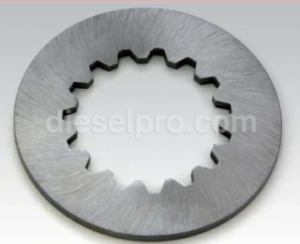
Washers serve as thrust spacers or load distribution surfaces between clutch packs and bearing races.
Replacement Requirements:
-
Replace all washers with signs of scoring, pitting, or excessive wear
-
Ensure proper material (bronze, steel, or fiber)
-
Install in correct orientation to bearing races or friction plates
Do not interchange washer thicknesses unless specified by the manufacturer. Always use washers from a matched overhaul kit when available.
Washer & Related Components For Allison M Marine Transmission
Washer & Related Components For Allison MH Marine Transmission
12. Oil Strainer – Protecting the Hydraulic System
Allison Strainer base for marine gear M and MH
The oil strainer prevents debris from circulating through the hydraulic oil system. A clogged or damaged strainer can cause:
-
Low oil pressure
-
Overheating
-
Oil starvation to clutches and pump
Maintenance Tips:
-
Clean the strainer during every oil change
-
Replace damaged mesh or dented housing
-
Secure the pickup screen to prevent vibration
-
Ensure the strainer tube is free of restrictions
Never operate the transmission without a clean and intact oil strainer.
Oil Strainer & Related Components For Allison M Marine Transmission
Oil Strainer & Related Components For Allison MH Marine Transmission
13. Spring & Bolt – Clutch and Valve Assemblies
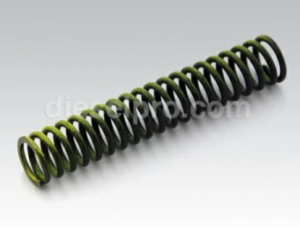
Springs are used in clutch pistons, spool valves, and control mechanisms. Over time, they can lose tension or break.
When to Replace:
-
Clutch release issues
-
Control valve sticking
-
Irregular gear shifting
-
Broken spring segments in oil pan
Replace with OEM-matched spring kits and bolts. Always check spring length, wire diameter, and preload where applicable.
Spring & Bolt & Related Components For Allison M Marine Transmission
Spring & Bolt & Related Components For Allison MH Marine Transmission
14. Oil Cooler & Filter – Managing Heat and Cleanliness
Allison Oil cooler for marine gear M, MH – with nipple
The oil cooler maintains transmission operating temperature and extends oil life. A clogged filter or heat exchanger will result in:
-
Overheating
-
Reduced clutch performance
-
Premature oil breakdown
-
Contaminated hydraulic system
Service Procedure:
-
Replace oil filters every 250–500 hours
-
Inspect cooler for internal restrictions or saltwater corrosion
-
Flush lines with mineral spirits before reinstallation
-
Use new gaskets and seals during assembly
Routine maintenance of the oil cooler and filter prevents system failure and prolongs clutch life.
Oil Cooler & Filter & Related Components For Allison M Marine Transmission
Oil Cooler & Filter & Related Components For Allison MH Marine Transmission
15. Coupling – Connecting the Propeller Shaft
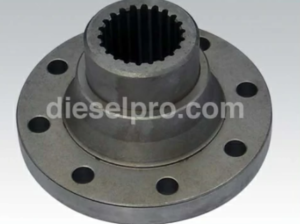
The coupling mates the transmission output shaft to the boat’s propeller shaft. Issues with couplings include:
-
Shaft misalignment
-
Vibration
-
Worn spline teeth
-
Backlash or loose fit
Replacement Checklist:
-
Match the spline count and shaft diameter
-
Use anti-seize on splines during assembly
-
Torque flange bolts to spec
-
Check for axial and radial alignment post-installation
Inspect keyways and spline hubs for wear before installation to ensure a solid and vibration-free connection.
Coupling & Bolt & Related Components For Allison M Marine Transmission
Coupling & Bolt & Related Components For Allison MH Marine Transmission
Final Notes On Component Replacement
When servicing or replacing parts on Allison M & MH marine transmissions, always follow these core principles:
-
Replace all seals, gaskets, and consumables during disassembly
-
Inspect hard components (gears, carriers, housings) for cracking or scoring
-
Use proper tools for installing bearings, sleeves, and seals
-
Torque and stake all fasteners to factory specifications
-
Flush and refill with clean oil after any service
When to Choose Individual Parts vs. Rebuild Kits
| Use Case | Best Option |
|---|---|
| Minor oil leak | Individual seal |
| Slipping clutch | Clutch plate set |
| Overheating & low pressure | Overhaul kit + oil cooler service |
| Major internal damage | Rebuilt transmission |
| Preventive service | Overhaul kit + filter/strainer |
| Gear whine or vibration | Bearings + locknut + coupling |
Conclusion
Every component shown plays a vital role in the smooth, efficient operation of Allison M & MH marine transmissions. Whether you’re replacing a single seal or overhauling the entire transmission, proper technique, quality parts, and attention to detail are critical to success.
Use this guide to streamline your service workflow, ensure reliability, and extend the life of your transmission. For detailed wear limits, tolerances, and hydraulic diagrams, refer to the OEM manual for your specific transmission model.
If you need this guide formatted as a complete blog post or landing page, optimized for SEO and ready for copy-paste into your CMS, let me know and I’ll prepare it for immediate use.
Additional Resources for Allison M & MH Marine Transmissions
Practical Guide To Servicing Allison M & MH Marine Transmissions



 Free US Calls: 1-888-433-4735
Free US Calls: 1-888-433-4735 International: 305-545-5588
International: 305-545-5588
